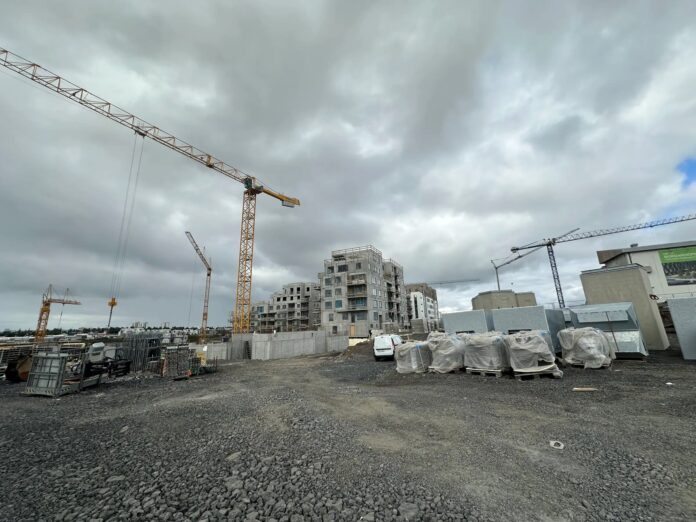There is a clear downturn in the construction industry. One third fewer flats are under construction than two years ago. An economist fears a vicious circle of housing shortage and interest rate rises.
After a four-year growth period turnover in the construction industry is contracting, jobs are disappearing and fewer building materials are being imported, according to a new analysis by Samtök iðnaðarins (Federation of Icelandic Industries).
8.800 flats were under construction in March 2023 according to the dashboard of Húsnæðis- og mannvirkjastofnun (Housing and Construction Authority), but that number fell to 7.200 in March 2024, a reduction of 1.600 flats in two years. At the beginning of this month 5.500 flats were under construction.
This is not in line with the government’s policy statement on rapidly increasing the number of flats with emergency measures.
Ingólfur Bender, chief economist of Samtök iðnaðarins, says this has wide-ranging effects – for example in higher interest rates, which affect everyone.
This is the first time in a long time that we are seeing these signs. And if things continue as they are we are going to see again that economic vicious circle that we have been trying to get ourselves out of in recent months. Which is a shortage of flats, leading to increased inflation and higher interest rates.
He says one consequence of this is that people are less able to buy flats.
People are kept on the sidelines, they cannot get into the market because of this, so they cannot buy. That is a big part of the problem we are dealing with at the moment.
Why is this happening?
Samtök iðnaðarins cites several reasons: high policy interest rates, high mortgage interest rates, high building costs, delays in planning matters, burdensome regulations, and a reduction in VAT refunds on tradesmen’s work.
And what is said to weigh most heavily is the shortage of buildable plots at affordable prices, and the complicated and lengthy process of obtaining building permits from the municipalities.
Gylfi Gíslason, contractor and managing director of the construction company Jáverk, says little comes as a surprise – this downturn was predictable.
The declared goal and role of Seðlabankinn (Central Bank of Iceland) is to try to reduce activity in the economy and that is beginning to show itself robustly.
How do you and your company feel this?
Inputs have become more expensive, one of them is capital which has risen very much. We are faced with very strict lending conditions.
In addition Gylfi mentions an increase in public levies on residential housing under construction.
And when all this is counted together then we are on the brink of our being able to build flats that people can [afford to] buy.
Close to 10% of the labour force in Iceland – or about 20.000 jobs – is in the construction industry, and staff numbers in the sector are already falling. “It has in fact been a problem through the years with this industry that it gets used for stabilisation [of the wider economy],” says Gylfi.
It is easy to strike out in the budget a few houses and a few roads – but behind this are companies and people. When there is such a large downturn then it costs to build up again when we really need this.
Source: Ruv.is




